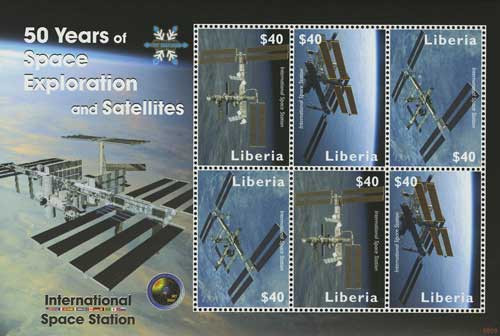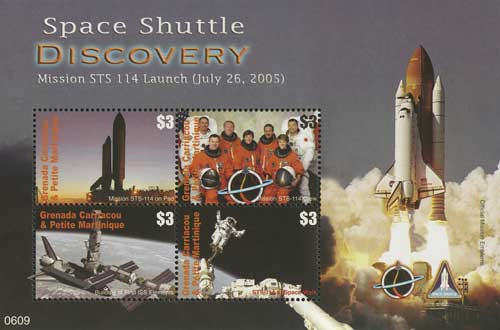
2006 Liberia 8 Years in Space
# M11174 - 2006 Liberia 8 Years in Space
$9.95
Mint Stamp Sheet Commemorates First Years
Of the International Space Station
The end of the Cold War led to increased cooperation between the U.S. and Soviet allies. In 1998, several countries combined their resources into a single project – the International Space Station. Components from the Russian Mir-2, the U.S. Freedom, the European Columbus, and the Japanese Kibo projects were merged. Russian and American rockets and space shuttles brought the materials and modules into space, and they were assembled in low orbit (about 200 miles above the Earth’s surface).
The ISS is made with a “modular” design. Separate sections (or modules) are constantly being added to the structure. When completed, the ISS will have 16 modules that serve as living quarters, science laboratories, docking stations, and more.
The ISS has housed astronauts since 2001, when American William Shepherd and Russians Sergei Krikalev and Yuri Gidzenko spent 141 days in space. Through 2010, people from 17 different nations visited the station, to help deliver supplies and construction materials, or for assignments that last several months.
Astronauts perform scientific experiments and international education programs. Some experiments benefit from longer stays in space – such as the effects of near-weightlessness on the human body. The ISS environment isn’t completely weightless – it has what is called “microgravity,” which provides a small, but measurable pull.
Mint Stamp Sheet Commemorates First Years
Of the International Space Station
The end of the Cold War led to increased cooperation between the U.S. and Soviet allies. In 1998, several countries combined their resources into a single project – the International Space Station. Components from the Russian Mir-2, the U.S. Freedom, the European Columbus, and the Japanese Kibo projects were merged. Russian and American rockets and space shuttles brought the materials and modules into space, and they were assembled in low orbit (about 200 miles above the Earth’s surface).
The ISS is made with a “modular” design. Separate sections (or modules) are constantly being added to the structure. When completed, the ISS will have 16 modules that serve as living quarters, science laboratories, docking stations, and more.
The ISS has housed astronauts since 2001, when American William Shepherd and Russians Sergei Krikalev and Yuri Gidzenko spent 141 days in space. Through 2010, people from 17 different nations visited the station, to help deliver supplies and construction materials, or for assignments that last several months.
Astronauts perform scientific experiments and international education programs. Some experiments benefit from longer stays in space – such as the effects of near-weightlessness on the human body. The ISS environment isn’t completely weightless – it has what is called “microgravity,” which provides a small, but measurable pull.











